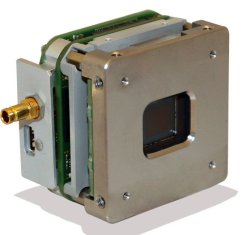


Paris, 22 February, 2018 – The CATRENE funding programme, managed by AENEAS, today highlights the CISTERN project. The multi-disciplinary partners in CISTERN aim to improve the performance of CMOS image capture sensors ready for Ultra High Definition (UHD) imaging and other next-generation applications. By extracting more information from the data that they capture, these new sensors and related technologies will enhance capabilities and image quality in high-end civil security systems, digital broadcast and cinema, and 3D gaming. They will also enhance imaging for food and agri-food applications.
Imaging plays a major role in people’s lives and the next generation technologies targeted by CISTERN will benefit both consumers and industry. In security systems, UHD will allow surveillance camera systems to ‘see’ more details even in low or extreme light conditions, increasing detection rates and levels of protection. In entertainment, UHD will enhance colours, contrast and the portrayal of motion, and will add greater depth for 3D gaming. In agriculture and agri-food applications, advances in multispectral imaging will improve mapping of land and the automated sorting of food.
Image capture is key to many European industries, often those with significant export markets worldwide, and CISTERN aims to ensure that Europe maintains this leading position. Sony and Grass Valley together have an 89% market share in outside broadcast cameras, a market worth 88 million USD. Overall, the global UHD TV market is expected to witness a CAGR exceeding 20% from 2017 to 2025, with strong growth in Asia-Pacific, Latin America and Russia. In security, the market for digital (IP-based) video surveillance is expected to grow at a CAGR of 24.2% during the period from 2013 to 2019, driven by a demand for better video quality*.
The CISTERN project consists of a consortium of partners, small and medium sized companies, large company and universities that collaborated intensively at the technical level enabling them to advance in their own application domains more rapidly than would be possible if they were developing their own solutions stand-alone. The partners are not direct competitors and face similar technical challenges in the development and application of the latest CMOS image sensors. This combination enables them to jointly search for solutions and share best practices from their application domains to create synergy and accelerate developments. The project aims at creating imager sensors for UHD TV and time-of-flight imagers with a focus on improved performance in areas such as spatial resolution, temporal resolution, higher bit depths, wider colour gamut and better spectral sensitivity. The effectiveness of the collaboration is shown by the unplanned exploitation in the global security (Adimec) and broadcast (Grass Valley) markets of first project results at the end of the second project year as illustrated in the two pictures below.


Another example of effectiveness of the collaboration is the formation of a spin-off company called MS Eye Tech that the University of Burgundy has created in the last year of the project. This spin-off company intends to commercialise the technical results on hyperspectral image capture for food sorting. It will also develop and commercialise some specific applications for university laboratories in Multispectral Imaging. See below the logo of the company:

About CATRENE
CATRENE is a EUREKA cluster programme managed by AENEAS. It was created in 2008 and focussed on micro and nanoelectronics research and innovation, which aims at achieving Technological Leadership for a competitive European ICT industry. It is based on the ambition of European countries, in partnership with European companies, to jointly deliver nano- and microelectronics-based solutions that respond to the needs of society at large, improve the economic prosperity of Europe and reinforce the ability of its industry to be at the forefront of global competition.
After 7 years of operation, more than 8 calls and 51 complete and still running programmes, CATRENE projects involving SMEs, large corporations, research institutions and universities have, and are, demonstrating great impact on societal challenges while promoting European economic development in this vital area.
About CATRENE: http://www.catrene.org
About AENEAS: https://aeneas-office.org
About CISTERN
CISTERN is an RD&I project consortium involving 5 European partners from the Netherlands, Belgium and France: Grass Valley (the project leader), Adimec, SoftKinetic Sensors NV, Delft University of Technology and University of Burgundy.
About CISTERN: http://www.cistern.nl/index.php/consortium
